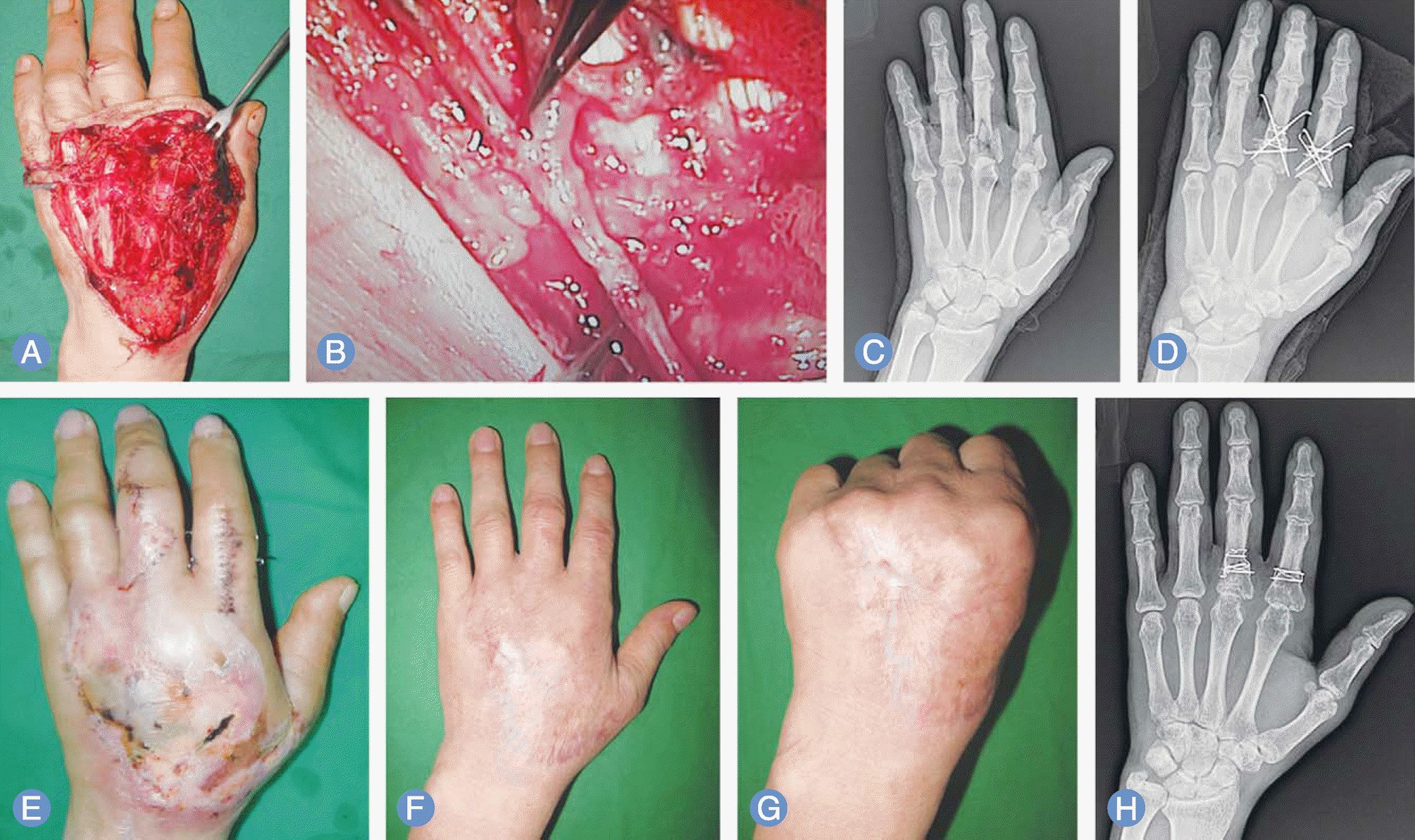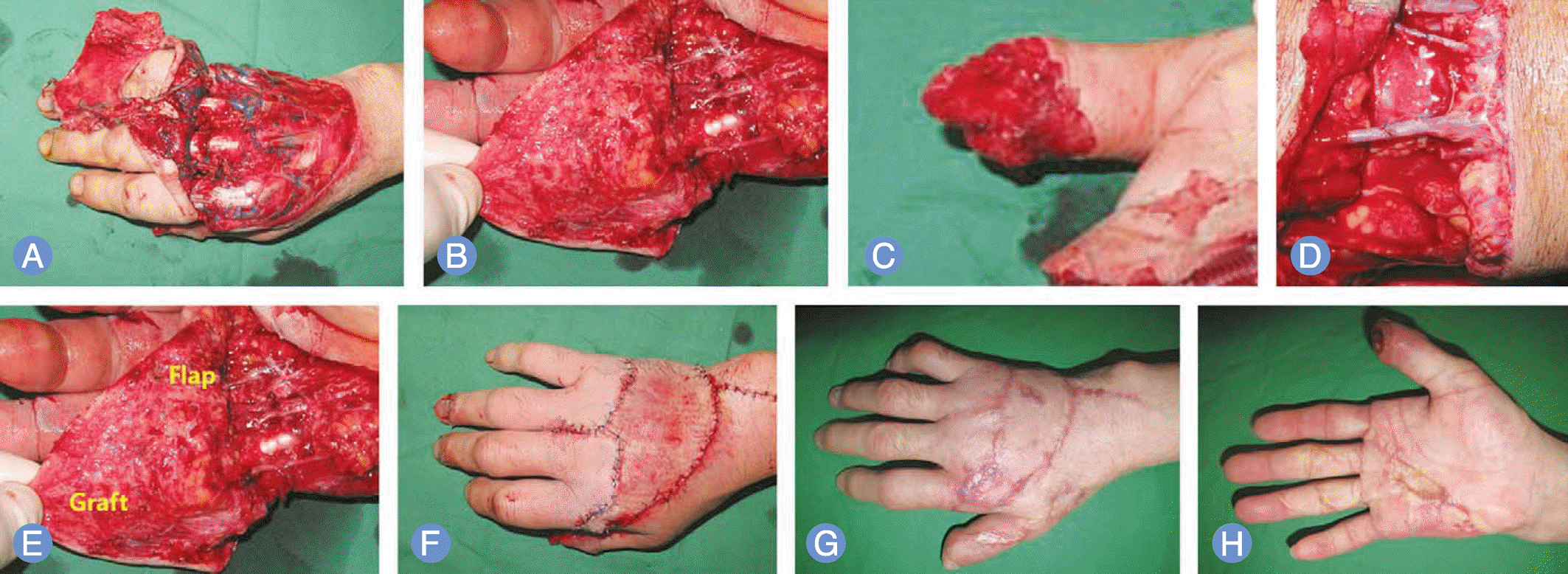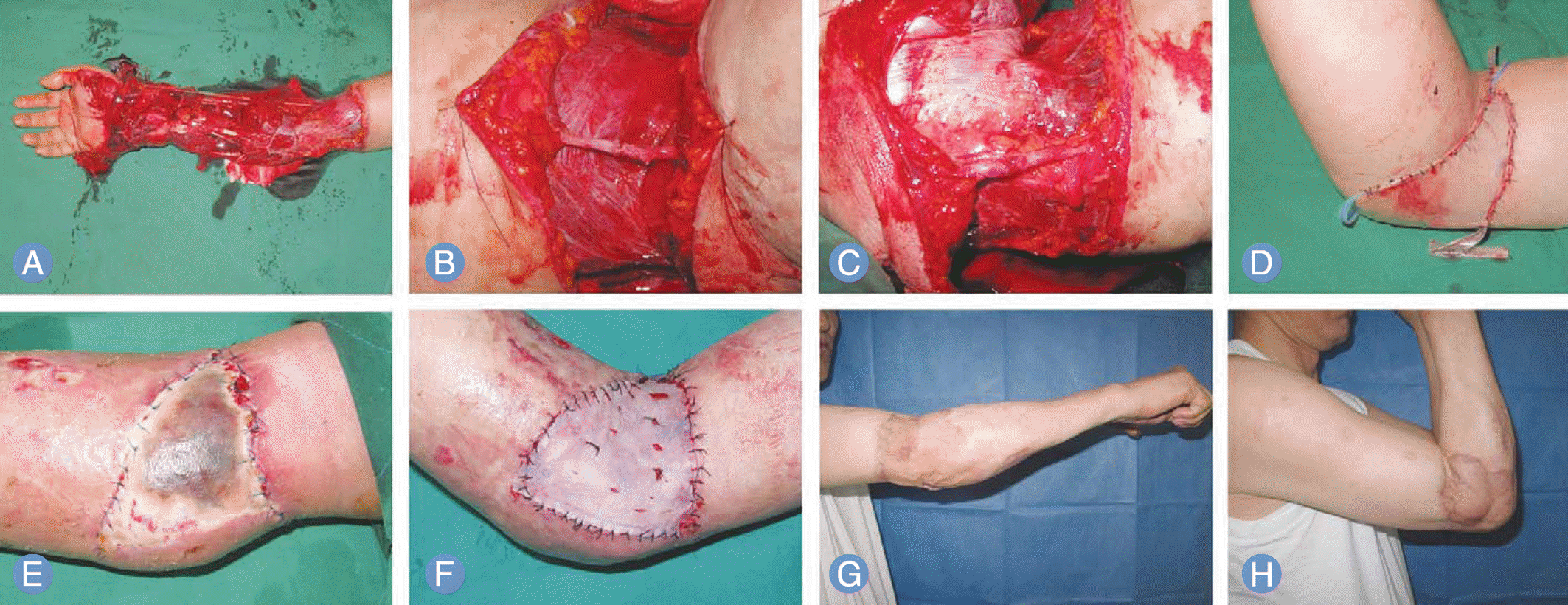Abstract
Purpose:
The purpose was to evaluate the efficiency of vein repair on flap survival in distally based avulsion flap injury of the hand and forearm.
Methods:
Sixteen cases of distally based avulsion flap injury larger than 30 cm2 in size of the hand and forearm in which vein repair was done were enrolled. All had a avulsion injury by rolling machine. To survive the flap, extensive debridement was done to reduce the size of distally based flap injury as little as possible. Thereafter, an average of 1.4 vein were repaired. Postoperatively, hyberbaric oxygen therapy was performed for 2 weeks. The flap survival was assessed at three weeks after operation.
Results:
When comparing the size of distally based avulsion flap injury and flaps that survived after operation, excellent results were observed in 12 cases, and good results in 4 cases. Additional operation was required including split thickness skin graft in 4 cases. A reverse island fasciocutaneous flap was performed in one case, and elbow joint arthrolysis was performed in another one.
References
1. Kang JS. Plastic surgery. 3rd ed.Seoul: Koonja;2004. p. 152–3.
2. Kim KC, Lee KJ, Kim JS, Woo SH. Revisit of the utilities and indications of reversed radial forearm flap for hand reconstruction. J Korean Soc Surg Hand. 2004; 9:292–8.
3. Woo SH, Kim SE, Lee TH, Jeong JH, Seul JH. Effects of blood flow and venous network on the survival of the arterialized venous flap. Plast Reconstr Surg. 1998; 101:1280–9.

4. Park WJ, Minn KW, Lee HJ. Clinical study on the effects of hyperbaric oxygen therapy in skin grafts. J Korean Soc Plast Reconstr Surg. 1992; 19:1032–40.
5. Gruber RP, Brinkley FB, Amato JJ, Mendelson JA. Hyperbaric oxygen and pedicle flaps, skin grafts, and burns. Plast Reconstr Surg. 1970; 45:24–30.

6. Champion WM, McSherry CK, Goulian D Jr. Effect of hyperbaric oxygen on the survival of pedicled skin flaps. J Surg Res. 1967; 7:583–6.

7. Jurell G, Kaijser L. The influence of varying pressure and duration of treatment with hyperbaric oxygen on the survival of skin flaps. An experimental study. Scand J Plast Reconstr Surg. 1973; 7:25–8.
8. McFarlane RM, Wermuth RE. The use of hyperbaric oxygen to prevent necrosis in experimental pedicle flaps and composite skin grafts. Plast Reconstr Surg. 1966; 37:422–30.
Fig. 1.
(A) Distally based avulsion flap injury involving dorsum of the left hand with phalangeal comminuted open fractures of index and long finger. (B) Microscopic photograph of vein repair for dorsum of the hand. (C) Radiograph of preoperative state. (D) Radiograph of immediate postoperative state. (E) Flap survival 3 weeks after operation. (F, G) Complete survival of the flap 6 months after operation with acceptable cosmetic appearance and normal range of motion of fingers. (H) Radiological bone union 6 months after operation.

Fig. 2.
(A-C) Distally based avulsion flap injury involving palm and dorsum of the right hand with thumb pulp avulsion amputation. (D) Photograph of vein repair for dorsum of the hand. (E) Flap to graft conversion technique. (F) Wound closure after massive debridement. (G, H) Flap survival 6 months after operation with acceptable cosmetic appearance and normal range of motion of fingers.

Fig. 3.
(A) Distally based avulsion flap injury involving right forearm with multiple forearm muscle ruptures. (B, C) Forearm superficial vein repair (basilar and cephalic vein). (D) Wound closure after massive debridement. (E) Flap survival 3 weeks after operation. (F) Skin graft done. (G, H). Flap survival 6 months after operation with acceptable cosmetic appearance and normal range of motion of elbow joint after arthrolysis (flexion contracture 15° and further flexion 110°)

Table 1.
Demography of the patients




 PDF
PDF ePub
ePub Citation
Citation Print
Print


 XML Download
XML Download